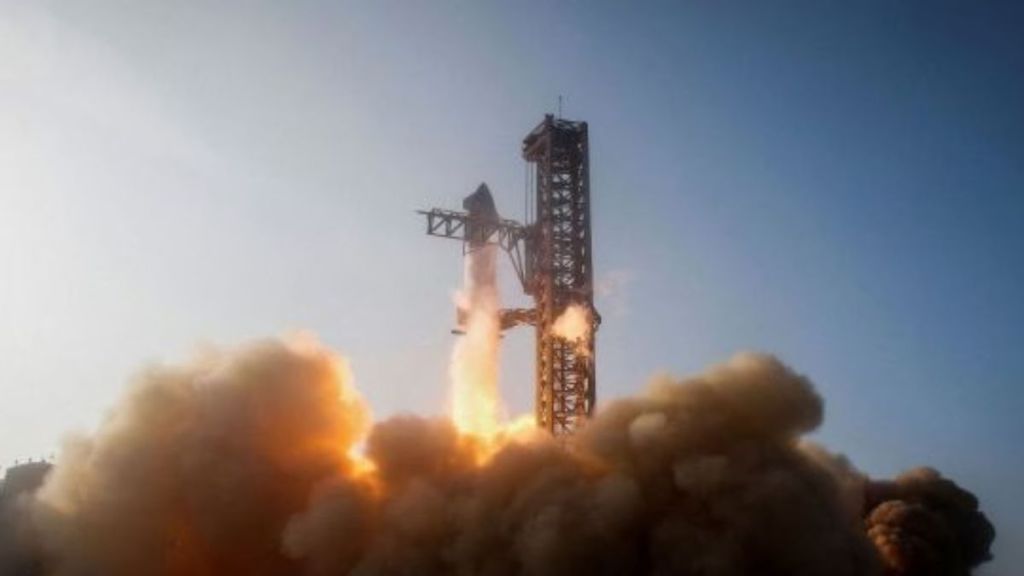Elon Musk’s SpaceX has received a launch licence from the US Federal Aviation Administration, clearing the way for the launch of Starship, the largest and most potent rocket ever constructed.
Earlier this month, SpaceX unveiled an image of the “Megabay” at its Starbase launch facility in Boca Chica, Texas, showcasing four Super Heavy boosters primed for launch. To date, Starship has undergone two test launches – one in April and another in November – both ending in explosions.
Despite the explosion during the November launch, it occurred much later in the flight plan compared to the April incident, indicating significant progress in SpaceX’s development of a larger launch vehicle. Elon Musk stated in November that the absence of a payload was the reason for the explosion, emphasizing that the rocket would likely have achieved orbit if it had carried one.
“Starship” typically encompasses both the Super Heavy booster and the spacecraft situated atop it. Collectively, they represent SpaceX’s next-generation launch systems engineered to transport cargo, astronauts, and potentially even missions beyond Earth orbit.
The inaugural component of Starship is the Super Heavy booster, engineered for complete reusability. Designed to re-enter Earth’s atmosphere and return to the launch site post-launch, it stands at an impressive height of approximately 69 meters and a width of 9 meters. Capable of carrying up to 3,400 tons of propellant, it will be propelled by an astounding assembly of 33 Raptor engines, generating a maximum thrust of up to 7,600 tons.
The subsequent stage of the system comprises the Starship spacecraft, featuring an integrated payload section tailored for accommodating both crew and cargo. Notably, SpaceX highlights its capability for point-to-point transport on Earth. With a payload capacity ranging between 100 and 150 tonnes, Starship will be equipped with three standard Raptor engines and three specialized Raptor engines modified for operation in the vacuum of space.


